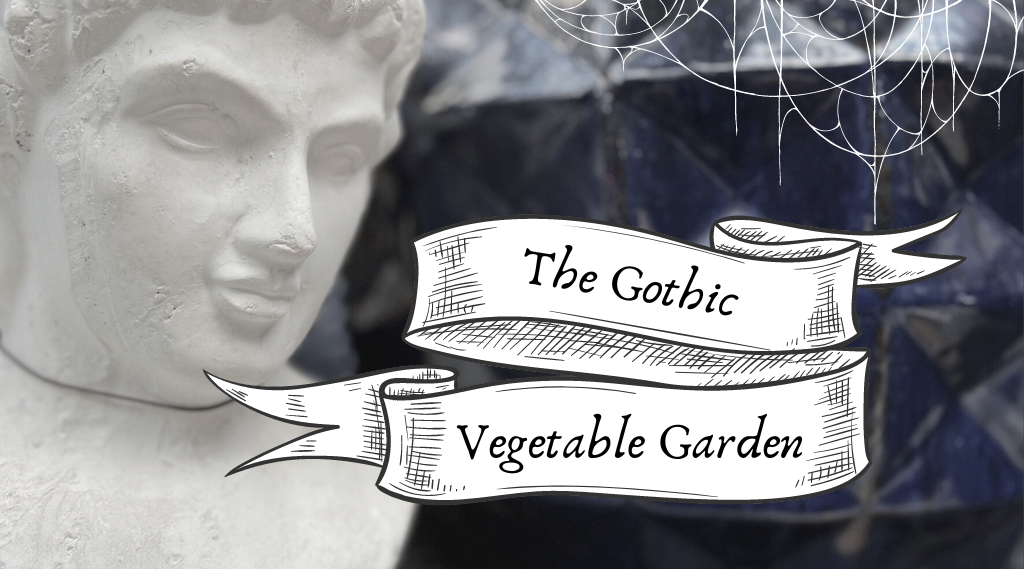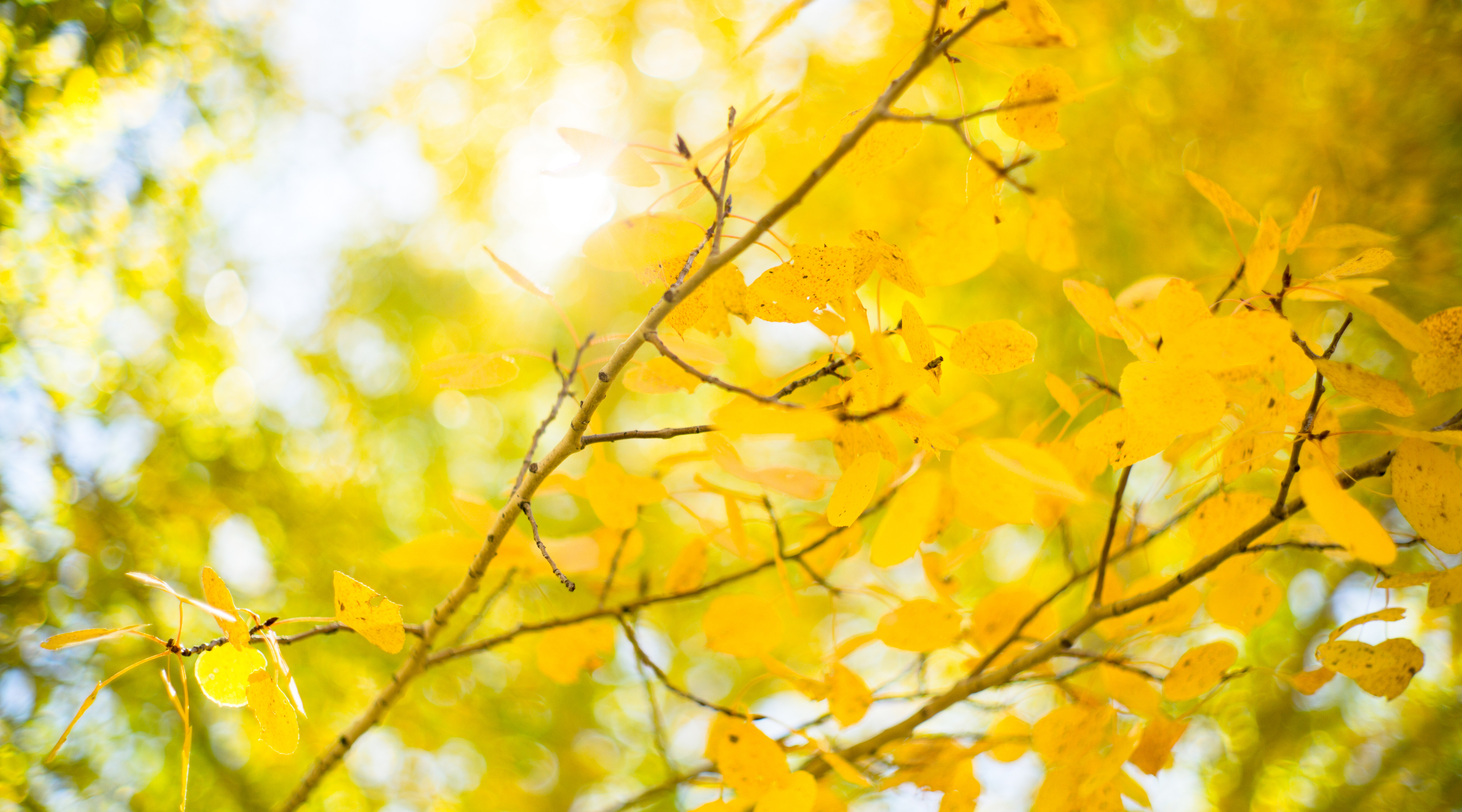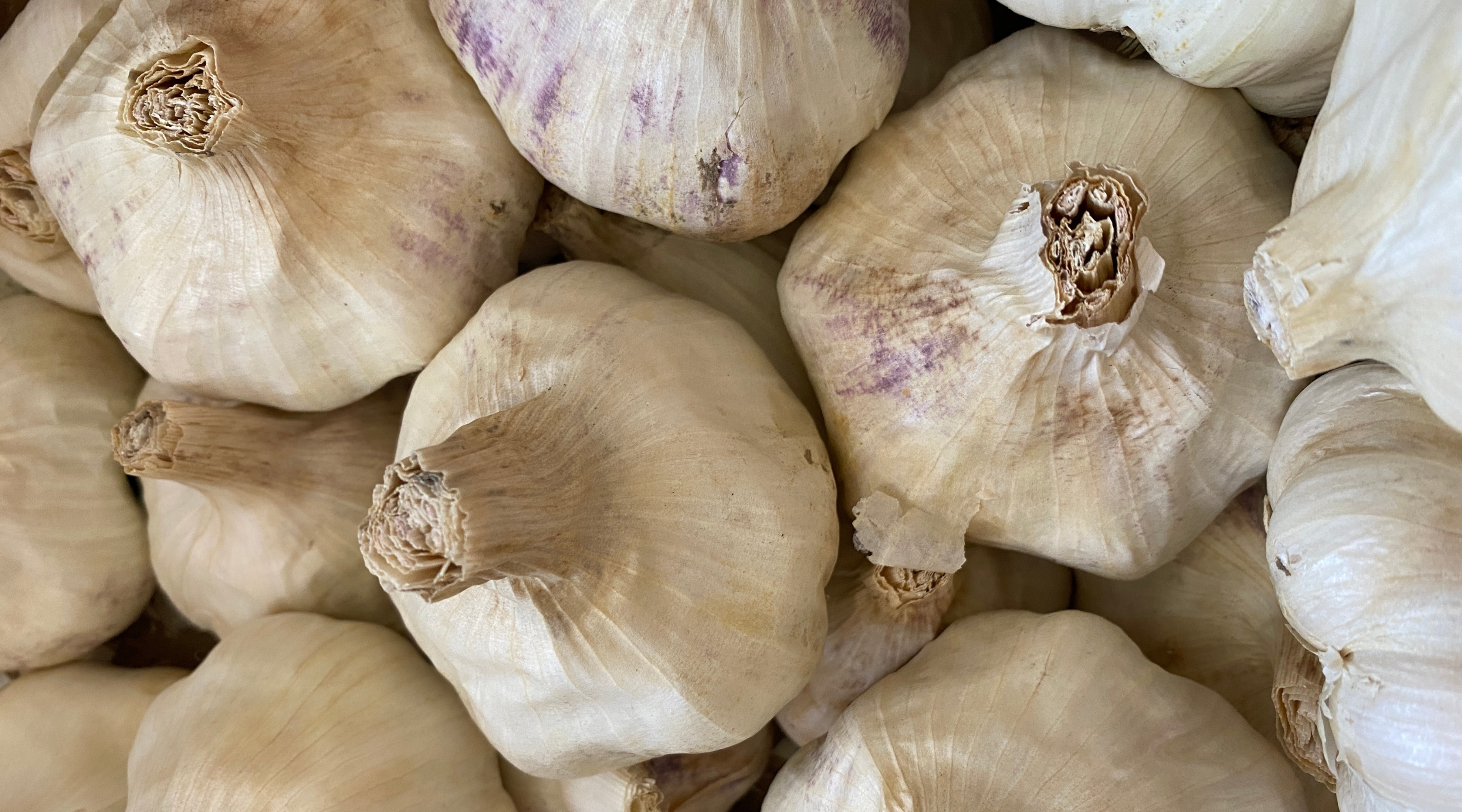Encouraging Kid’s Green Thumbs
There is a saying that “green thumbs are not born, they’re grown.” And here at Rick’s we heartily agree! Green thumbs come in all shapes and sizes, and even ages. Today we want to encourage younger green thumbs- kiddos! Kids are naturally attracted to dirt, worms, flowers, bugs, watering cans, seeds, berries and even veggies that are unique. It really is quite easy to get them hooked on becoming gardeners. Some may balk at including kiddos in the garden. What if they mess things up? I counter, adults also mess things up in the garden- often without trying. Let the kids learn, experiment, play and succeed in the garden. If you are a parent, teacher, guardian, devoted auntie, grandparent, or other care giver, these tips will get you started on introducing kids to the wide world of science and beauty of plants.
Gardening is an adventure into math, science and art. Math is used when discussing how far and deep seeds are planted, as well as in the conversation of, “If we have three eaters in our home, how many zucchini plants do we need to plant?” There is no right answer for this conundrum, because you typically end up with too many zucchini in general. But having that conversation with a child allows them to think of the production of one zucchini plant, how to extrapolate how many ways they and other eaters can eat zucchini, and to problem solve with what to do with any extras. Maybe the neighbor next door would like some?
Science takes a look at the immediate needs of a plant; nutrients, water and sunlight. But as a kiddo becomes more advanced in their gardening skills, you can begin talking about seed production, pollination, photosynthesis, soil biology, mushrooms, diseases, pests and the list goes on! Perhaps most importantly, it may be wise to share why gardening is so important to embark on in this time and age. This can cover creating habitats and safe zones for pollinators, building food sovereignty and security while avoiding supply chain disturbances, farming for the purpose of carbon sequestration, etc. And the variations on this theme grow infinitely from there.
Of course art goes hand in hand with gardening. Design and edibleness are dependent on aesthetic values. A child will love choosing pansies (some look like tiger stripes!), colorful zinnias, snapdragons, and other annual flowers for their container garden. Consider taking them through the perennials section for in season cut bouquets, including daisies, black-eyed Susans, Penstemons, and Yarrow. They may want to try purple carrots, purple tomatillos, purple beans or peas, or eggplants if the kiddo’s favorite color is, you guessed it- purple! Challenge them to create colorful dishes with the veggies you all grow. “Can you create an all orange meal? All green? Red? Can you have every color of the rainbow represented on your plate?” Growing vegetables for their colors is not only fun, it is healthy! Produce that have unique colors often are chock full of vitamins, antioxidants and other nutrients that we may neglect to get through our Standard American Diet (SAD).
Other ways to encourage the gardener in every child:
- Pick out seeds together to grow by inviting them to take a look at a seed catalog or a seed company’s website. If you are looking for wild and very colorful seeds, Baker Creek Seeds is a great start!
- Grow sprouts or microgreens if you are lacking space, but want a child to see the life of a plant from seed to germination to the plate. See our other blog this month for details on how to grow microgreens!
- Grow things that create awe and wonder like:
- Sunflowers
- Beans
- Pumpkins
- Small cherry tomato varieties (Spoon is a great variety, because it is abundant and kiddos love the “baby” tomatoes)
- Raspberries and blackberries
- Plant a tree, and talk through how trees are important for creating habitat, providing oxygen, cooling of the climate and are a generous resource for paper, fruit, and wood.
- Plant fall or spring bulbs for children who may need an example of delayed gratification. Plant the popular daffodils in the fall and watch them bloom in the spring. Or plant gladiolas now and watch them pop up late summer.
- Build an observation habitat: Plant flowers and other plants that will attract hummingbirds or other pollinators that the children love (butterflies, bumble bees, etc). Place a bench beside the habitat and have children tell you what they see, hear, smell, feel, etc. This prompts quiet patience and the building blocks for scientific inquiry.
- Begin a worm or compost bin. Collect kitchen scraps, shred old school work, or bills and throw in a generous community of worms. Children will be amazed to watch these items turn into worm castings, or worm poo, and how it can be used in the garden or with house plants.
A kiddo who eats their first carrot or snap pea from the garden will never forget that moment. While gardening is magical as a child, being an adult and witnessing the magic is priceless. Green thumbs can grow at any age and stage, but it is a true gift to give the love for gardening to a child. They have the rest of their lives to grow with it!
Rick’s Garden Center believes in the power of people and plants. All of our blogs and content are written and edited by real humans with their own unique creative perspectives. Any use of our publications to ‘train’ generative artificial intelligence (AI) technologies to generative text is expressly prohibited. Any typos or errors are our own

2025 Garden To-Do’s Recap 1#
Here are the gardening references we shared over the past month. We’re big fans of Colorado State University extension, so you’ll see us referencing them all the time. However, we also have some written articles just for you under our blog! There will be more gardening references for the year, so stay tuned!
Relative Houseplant Care/Rescuing House Plants:
Listen…shhhhh…if you listen closely, you can hear that neglected plant in the corner crying for help. You did not mean to cause harm. Whether you left for your holiday travels in a rush and failed to give your plants some extra TLC before you left, or you do not know the plant’s needs, the stress is equally killing you. You are at the point of not knowing what to do to make your plants happy again. No worries! We got you on our blog!
Starting Seeds Indoors:
We know it seems early, but the sooner you start your seeds the better. For tomato and pepper plants it’s recommended you start them outside once soil temperatures reach 50 degrees at night. This however doesn’t work well for Colorado’s short growing season. To get the most produce out of your vegetables we recommend starting seeds indoors now and in February! All you need is a seed-starting soil mix and a grow kit!
Seed Starting Troubles:
Have you been waiting for your seeds to pop up and still nothing? No matter what you do, your seedlings perish. There are multiple factors as to why your seeds may not be sprouting. Seed age, crusting soil, and temperature fluctuation are just a few. In the article below by CSU Extension, scientists review why your seeds may not thrive as they should. Fear not, solutions are provided to fix issues and to get those seeds growing! Happy gardening!
Winter Watering:
If air temperature is above 40 degrees it’s time to winter water! Read more about winter watering rules below!
https://www.csu.org/blog/winter-watering-tips
Do’s & Dont’s of Transplanting:
Want to get bang for your buck when starting transplants? Learn the dos and don’ts of growing transplants by copying and pasting the link below! And if you need containers we wanted to remind you we have a free drop off/pick up bin behind the store in our parking lot-perfect for starting seeds or other transplants (once they’re clean that is)!
Garden Planning:
Now’s a great time to start garden planning for spring! Remember to consider space when mapping your beds and companion plants! The links below will lead to more information about early garden planning and companion plants!
General Info:
Companion Plants:
General Onion Care:
Intimidated by growing and planting onions? How about storage, before and after planting and growing these flavorful bulbs? And what the heck does daylight have to do with all of it?
Among the hundreds of questions involving onions you may have, we’ve contacted the experts for their advice. Learn the essentials for onion care from Dixondale Farms!
Growing Potatoes at Home:
Want to try growing potatoes this season in your home garden? We have a link for you! We recommend reading Colorado State University article on the subject!
https://extension.colostate.edu/topic-areas/yard-garden/potatoes-in-the-home-garden-7-617
Spring Bulb Care:
Intimidated by growing spring bulbs? Don’t be with Colorado State Extensions help! Learn how to keep beautiful spring bulbs, corms, and roots alive by reading the article below or in our story/highlights. The article provides everything from choosing a perfect planting spot to planting depth for certain favorites Happy gardening!
https://extension.colostate.edu/topic-areas/yard-garden/spring-planted-bulbs-corms-and-roots-7-411
Rick’s Tree Planting Guide:
We know many of you are familiar with our Tree Planting Guide, so here it is again! This guide is perfect for those interested in buying a tree or about to plant a new one. We also sell mulch, root stimulators, and mycorrhizae for tree planting! Happy gardening!
https://www.ricksgarden.com/wp-content/uploads/2021/04/Ricks-Tree-Shrub-Planting-Guide.pdf

Getting Home & Garden Ready For Sale
Despite mortgage interest rates continuing to climb in the past several months, in this military base-saturated city, we continue to have a thriving real estate market. If you are prepping a house for sale, know that it does not have to be scary! Historically most house sales occur in the spring, so the later winter months are the perfect time to begin thinking about how to improve your curb appeal and get a “to-do” list fleshed out in time for your spring sale. Sprucing up your yard is especially important.
The first thing you should do is take your blinders off. You probably have lived at your house for some time. Pretend you are pulling up to the house for the first time or walk by your house like you are new to the neighborhood. Take notes. Like an artist, you will come back to this step multiple times, building a masterpiece!
- Do you have a couple of ways your eye can “travel” through the landscape? If not, how can you add interest in multiple areas of your yard?
- What are the immediate eye sores? Clean those up or remove them immediately.
- What is the highlight of your home and yard? How can you further accent it?
- What trees or shrubs need to be trimmed?
- Are there holes in the landscape? Can a tree, shrub, ornamental grasses, several perennials, or a boulder fill in the gaps?
The second thing that is helpful to do right now is a general yard cleanup. Even if your yard is ho-hum, an easy way to elevate the place is to do some general yard maintenance.
- Clean pathways/ sidewalks by sweeping dirt/ debris or pulling weeds
- Rake leaves off your lawn. Leaves can be mulched into your lawn also, by running a lawn mower over them.
- Remove any weeds. Pulling is preferred especially now, when they are most likely dead. Feel free to put a natural pre-emergent down, like corn gluten. This will prevent weed seeds from germinating in the spring.
- Pruning should be done in the spring, but take note of which trees or shrubs should be addressed before your sale.
- Consider if outdoor statement containers should be purchased, so you can plant vibrant flowers ahead of putting your home on the market.
- Add a fresh layer of mulch or gravel to refresh any landscaping areas. Do not forget to put a weed pre-emergent down under the mulch and on top of the new mulch, to discourage weed growth. There is nothing more aggravating than completing a clean landscaping job to have weeds pop up in the spring. You can also consider laying down weed barrier fabric under the mulch.
- It should also be mentioned that you should remove any yard art that is specific to your “aesthetic.” You want potential buyers to imagine their own lives when doing a home walkthrough. Pack the garden gnomes away for when you move into your new place!
Next, you will want to address outdoor lighting. If you plan on selling in the spring, you will be hitting the market before it is light in the evenings. You will want to ensure that you make your house feel welcoming as people come to showings after getting off of work.
- Highlight your entrance. This is the most important area to highlight. If you are concerned about light pollution, make sure the light casts downward, instead of out or upward. If you are further interested in reducing light pollution at your home, check out this resource on what light fixtures are best: Click here!
- Other areas to consider lighting include pathways, the address number on your house, and any architecture or plants you want to illuminate.
Finally, consider your plant life. You will not do any planting until spring, but this is a wonderful time to find plants that will fit your needs. In the first step, you identified if your eye traveled through the house/garden lay out, if there were any highlights, and if there were holes in the landscape. As you choose plants to fit these roles, consider the following:
- How much water does it require? Will you be able to ensure it gets the water it needs until you sell? Will potential buyers be turned off by the amount of water that you use? Consider more xeric or water-wise options, if this is the case.
- How much maintenance will it require? For example, many younger buyers are no longer interested in lawns, due to the regular, watering, fertilization, aeration, and mowing that a lawn requires.
- If you have deer or rabbits in the neighborhood, consider choosing species that are resistant to their munching, so all of your plants look good for your closing!
- Resources that are helpful when selecting native plants or water-wise plants are detailed below:
- Plant Select is a brand of plants that we sell. They have an excellent variety of plants and detailed descriptions of each plant. They specialize in plants that are, “…unique, smart, and sustainable plants inspired by the Rocky Mountain region.” Check them out here: Click here!
- High Country Gardens is another gem of information. They “…offer a diverse and ever-expanding selection of plants for the unique challenges of Western gardens.” Use their perennial filter to drill down to find those difficult-to-find plants that are deer-resistant, in partial shade, water-wise, and good for your zone. Check them out here: Click here!
- Finally, a local resource. Please check out the water-wise demonstration gardens that the Colorado Springs Utilities have. They have two different locations listed below. All of the plants are labeled, which is helpful when you find a plant you have fallen in love with! It is helpful to go visit through the four seasons, so you see how foliage and plants change throughout the year. Check them out here: Click here!
There you have it! Good luck with getting your property ready for sale!

Blossoms on Your Plate
Are you ready to elevate your gardening game to a whole new level of deliciousness? Well, we’re about to dive into the vibrant world of edible flowers that will not only make your garden pop but also your plate! Many of them are easy to grow, forgiving of rookie mistakes, and will reward you with an explosion of colors and flavors.
Nasturtiums (Tropaeolum majus): These deep burgundy to buttery yellow blooms have a peppery kick, perfect as a spicy twist to salads, tacos, and avocado toasts. Bonus: They’re easy to grow, thriving in poor soil and other neglect. These flowers are high in vitamin C. The entire plant is edible- so try out the lily pad-like leaves also! Deer resistant.
Calendula (Calendula officinalis): Often called “poor man’s saffron,” the golden petals of calendula add a subtle saffron flavor to rice dishes and soups. They’re sun lovers and can tough it out in the Rocky Mountain soil. This flower is also known for its skin-healing properties, consider making a toner with calendula flowers. Deer are typically not a fan of these flowers.
Pansies (Viola tricolor): These adorable flowers come in an array of colors and have a slightly sweet, grassy taste. Scatter them over desserts after dipping them in water and then sugar for a delicate but sweet touch. Or freeze them in ice cubes for fancy drinks. Pansies are cold-hardy and can withstand our unpredictable mountain weather. We had a pot of pansies survive the entire winter, even when temperatures dipped below 20 degrees!
Lavender (Lavandula angustifolia): Known for its calming aroma, lavender adds a delicate floral flavor to desserts, teas, and even cocktails. It thrives in well-drained soil, making it a great match for rocky gardens. We have several varieties that will survive year-round in our nursery area. Look for varieties such as Munstead, Hidot Blue, and Phenomenal. Due to the fragrance of these flowers, deer typically leave them alone.
Rose (Rosa spp.): Beyond being a symbol of romance, roses can be used in various culinary creations. Make tea with their dried petals, infuse honey with their fragrance, or toss the petals into desserts. The rose hips that are produced in the fall are also edible and high in vitamin C. You can make tea from the rosehips as well. We have several varieties of roses, some more bred for their blooms, others are cultivated to be hardy for our mountainous climate.
Borage (Borago officinalis): With its brilliant blue flowers, borage adds a refreshing cucumber taste to salads, drinks, and desserts. The best part? Borage is a self-seeding annual, making it a low-maintenance addition to your garden. The pollinators will also feast on these blooms! Deer typically avoid this plant.
Chamomile (Matricaria chamomilla): Beyond being a bedtime tea, chamomile flowers can be used in salads or infused into syrups that go well in cocktails, over ice cream, or on pancakes. These sun-loving plants will thrive in our bright sun. Deer tend to avoid this plant due to its fragrance.
Dianthus (Dianthus spp.): Also known as pinks, or sometimes recognized as carnations, these flowers have a mild clove-like flavor. Add them to fruit salads, and desserts, or dry them and add them to various spice blends (za’atar, is a great example). Dianthus are hardy perennials, returning year after year. They are also deer-resistant.
Hibiscus (Hibiscus rosa-sinensis): Hibiscus flowers make a delightful and tropical addition to beverages, jams, and desserts. We carry gorgeous hardy hibiscus that will winter as a perennial shrub. Hibiscus also has high levels of vitamin C and is an excellent herb for overall health.
Daylilies (Hemerocallis spp.): Despite their fleeting beauty, daylilies are edible and offer a slightly sweet flavor. Stuff the blossoms with a soft cheese, or add them to stir-fries. Do your research on whether you have a daylily, before digging into a meal. Not all species of lilies are edible. These hardy perennials are a reliable choice in our climate.
Elderflower (Sambucus nigra): Fragrant elderflowers can be used to make refreshing beverages like elderflower cordial or add a subtle floral note to desserts. Elderflowers come from elderberry bushes, so you will also be able to eat elderberries if the birds don’t beat you to it! These shrubs are well-suited for the mountain environment, making them a great choice for your garden.
So, whether you’re a seasoned horticulturist or a budding green thumb, dive into the world of edible flowers and turn your garden into a culinary masterpiece. After all, why just stop and smell the roses when you can toss them in a dish too? Happy gardening and bon appétit!

The Gothic Vegetable Garden
By Katherine Placzek
Black & purple vegetables are not only for someone who is looking for a fun or Gothic vibe in their garden. Purple-ish fruits and vegetables have higher antioxidants, which play an important role in protecting your cells against heart disease, cancer, and other diseases. So it is healthy for you to plant and eat these dark maroon beauties!
All of these vegetables are carried by us as seeds through the Botanical Interests or Lake Valley Seed brands (both CO businesses). There is a wide array of purple/ black vegetables so feel free to go down the rabbit hole and create the dark and mysterious garden of your dreams! Note that various seeds may be out of stock throughout the season.
Amaranth
Burgundy: These plants offer beauty and sustenance! The plants can get tall and have elegant and eye-catching burgundy plumes that can be used in flower arrangements. The seeds were a major crop of the Aztecs, and are very high in protein and other nutrients. Cook the beige seeds like rice. Young leaves are also edible- use them in salads or steamed. The birds will also enjoy the seeds!
Basil
Cardinal: Cardinal’s’ deep crimson blooms allow this basil variety to be utilized beyond its culinary qualities! Use it as a surprising accent in a mixed container, or use it as a cut flower! The fragrance is lovely. With its strong scent, a little goes a long way in the kitchen. A wonderful dual-purpose herb.
Purple Petra: A deep purple, this basil adds vibrant color to any dish! A more mild basil- great for those who just want the essence of basil in their cooking. ‘Purple Petra’ can be used to make an elegant pink-tinted vinegar also! Use it as a companion plant to your nightshade veggies or as a statement plant in an herbal ensemble or annual flower container.
Purple Opal: Opal Basil has eye-catching purple leaves, and will bloom during the summer with light pink flowers. Feel free to fall in love with this variety! Grow it just for its rich beauty or for its culinary uses. Highly flavorful, this basil variety has flavor notes of cinnamon, anise, mint, and clove!
Siam Queen Thai: This beautiful basil has a complex sweet and spicy flavor with a hint of anise. Broadly used in Thai and Vietnamese dishes- it is versatile! It is easy to grow and highly ornamental with its dark amethyst blooms. Flower farms also grow Thai basil, for cut bouquets. Include it in your garden flower bunch and enjoy the unique fragrance. Bees also love this stuff!
Sweet Thai: Thai basil is of course a popular herb in many Southeast Asian cuisines, and is most regularly highlighted in a warm bowl of Vietnamese pho. This variety holds its flavor and texture through cooking more than other basils. Lovely in salads or when eaten fresh. Sweet Thai’s dark purple flowers and intoxicating scent allow it to double as an excellent addition to the flower garden. Produces well in containers also.
Beans
Royal Burgundy (Bush): Royal Burgundy has yummy purple pods that are easy to spot among green leaves. A wonderful variety to grow in cool weather and is unlikely to be challenged by bean beetles. A good container variety, as well as disease-resistant.
Trionfo Violetto (Pole): Trionfo Violetto’ translates to “purple triumph.” This Italian heirloom will win your heart, with its crisp and flavorful purple pods. While highly ornamental the plants are also highly prolific! The plants climb 6’–8′, and have prolific light amethyst flowers that bloom against green leaves that sport purple veins and stems. Similar to other purple beans, the pods magically turn green when they are cooked!
Beets
Bulls Blood: Plant one row of this beet variety for the beautiful greens, and another for the flavorful roots! ‘Bull’s Blood’ is valued for its tender, sweet, and deep red– almost plum foliage. Originally selected from a French heirloom for the darkest colored leaves, the 16″ “greens” are rich in nutrients! The roots are delicious as well, especially so, when harvested small. Use in succession planting as multiple crops are possible throughout a season.
Broccoli
Burgundy: This variety of broccoli is considered a “sprouting broccoli” since it produces one small main head, but then produces generous side shoots. Purple broccolis tend to be tender, flavorful, and full of antioxidants! ‘Burgundy’; is tolerant of a wider range of temperatures, which allows a longer harvest period. Some gardeners prefer to pinch the main floret off early on, to encourage more abundant side shoots. Also resistant to the disease, Fusarium yellows.
Cabbage
Red Acre: Jazz up cole slaw or any stir-fry with this gorgeous, deep-fuchsia cabbage! This variety has a very fresh and sweet flavor. Solid heads form early and grow on compact plants making ‘Red Acre’ an ideal choice for urban gardeners who may have limited space. Resistant to splitting as well as cabbage yellows disease. The heads store very well, in the refrigerator or a root cellar. A variety you must try!
Carrots
Cosmic Purple Carrots: While various colored carrots seem to be the new fad, they have been around for centuries. In fact, the purple carrot has been around for at least 1,000 years! While previously unpopular compared to orange carrots, purple carrots have been rediscovered, and rightfully so! Besides being high in vitamin A, purple carrots contain anthocyanins (an antioxidant) that are common in blueberries. Kids will love them!
Eggplants
Black Beauty: A beautiful nearly black vegetable with lovely, lavender blossoms pretty enough to grow in the flower garden! ‘Black Beauty’ has set the standard since 1902 for large and high-quality fruit. When harvested at its peak, the skin is tender, so no need to peel it; making it perfect for eggplant parmesan, ratatouille, and grilling!
Finger Fruit Purple: Grow fast-producing clusters of beautiful eggplants on your patio or a sunny corner of your vegetable plot! These 4-6″ fruits contain few seeds and have thin, tender skin—perfect for stir-fries and roasting. A plethora of royal purple fruits on just 22-38″ tall plants make this variety a perfect fit for containers and small gardens.
Jewel Amethyst: ‘Jewel Amethyst’ is perfect for containers, since it has a tidy habit. You will also notice its growing pattern makes harvesting a joy! The oval, purple fruits are best harvested when about 3”–4 ½” long, to stay tender. Harvest regularly from this variety to keep eggplant producing throughout the season.
Long Purple: This long, slender variety, is not usually found in grocery stores, and is a treat! Sometimes called ‘Italian Long Purple’, this prolific heirloom will bring beautiful ruby-purple color to the garden and savory goodness to the table. Enjoy in a wide variety of dishes!
Kohlrabi
Early Purple Vienna: Early Purple Vienna kohlrabi is an easy-to-grow cool weather crop that forms a distinctive dusty lilac bulb with pale flesh above ground. A beautiful plant! Peel its crunchy bulb and enjoy it raw or cooked. Leaves are also edible- eat similarly to collards, or other steamed greens. Kohlrabi is high in fiber, making it an excellent veggie for overall gut health. Kohlrabi is also high in isothiocyanates and glucosinolates, which are powerful antioxidants, thought to lower the risk of certain cancers, heart disease, and inflammation. Keeps well in the fridge.
Lettuces/ Greens
Brentwood Lettuce: This variety produces pretty burgundy lettuce leaves making for some beautiful salads! The heads produce high yields in compact spaces, and their bolt resistance allows for a long harvest. Also resistant to downy mildew, lettuce leaf aphid, and Fusarium wilt.
Dazzling Blue Kale: You will be mesmerized by the beautiful colors of this extra-cold-hardy kale. It is even more cold-tolerant than other lacinato types. The purple midrib pops against the blue-green leaves, some of which may take on more purple hues in the cool temperatures of fall. Lacinato kale is ideal for kale salads. Pick tender, baby greens for fresh salads, chips, or sauteing, in just 30 days!
Marvel of Four Seasons: Tasty and attractive, this 1800s French heirloom is also known as Merveille de Quatre Saisons. The variety has sweet and tender leaves that are chartreuse green at the base, turning to a beautiful cranberry-red, and forming a crinkly rosette! Gorgeous! Rosettes are 8″–12″ in diameter and good for large containers.
Red Russian Kale: Typically, kale gets sweeter after the first fall frost. ‘Red Russian’, on the other hand, is sweet and tender all the time. The lavender veins are part of what makes ‘Red Russian’ as attractive as it is delicious. Harvest baby greens in just 21 days!
Truchas Mini Romaine: This deep-merlot, mini-romaine is a game-changer for salads! ‘Truchas’ is compact and easy to grow in small spaces. It also creates gorgeous contrasts with green lettuce. Uniform leaves stay upright in the garden and make for easy plant cleanup. Has disease resistance to downy mildew, lettuce die-back, and lettuce mosaic virus.
Nasturtium
Black Velvet: These edible beauties add glamorous, ruby-black color to your salads and cheese plates! All parts of the flower (leaves, seeds, stems and flowers) are edible! Garnish tacos, avocado toasts, and pasta dishes with these beauties! Excellent as a companion plant to your tomatoes, and they repel several pests. Gorgeous in containers as well.
Tom Thumb Black Velvet: Tom Thumb features velvety, nearly black flowers with contrasting bright green foliage! Compact plants make this an outstanding choice for the border and containers. All parts of the flower (Leaves, seeds, stems and flowers) are edible! Add flowers to charcuterie boards, gazpachos, strewn on roasted root veggies, or create vinegar from them, for various culinary experiences!
Okra
Red Burgundy: Whether you eat okra or not, this plant is worth growing, just for the beauty of it! The pods are deep crimson edging toward maroon and are preceded by gorgeous yellow flowers that the bees love. This is the most productive red variety and will produce tender, 6″-long pods that are delicious in soup, gumbo, and stew, or deep-fried.
Shiso
Green and Red Shiso Perilla: An absolute must for herb gardens! Also called Japanese basil or the beefsteak plant, shiso’s incredible flavor can be described as a combination of cinnamon, mint, and clove with notes of cumin. A beautiful, heat- and drought-tolerant bedding plant that attracts pollinators, and is excellent for containers. This packet provides 75% green shiso and 25% red (shows up as a deep mulberry color).
Snap Pea
Sugar Magnolia: Wow, a purple snap pea that is tender and delicious! Enjoy the pretty purple blooms first, then the purple pea pods. Eat them without shelling, dipped in hummus, in a salad, or in stir-fries! Long hypertendrils (vigorous, multi-branching tendrils) support the 6′-7′ vining plants. This growing pattern creates an airy structure that helps prevent mildew. Some of these open-pollinated peas may be flecked with green, or be fully green.
Tomatillo
Purple: A purple tomatillo! Not only delicious but alluring also. The purple fruits are much sweeter than the green types and rich in antioxidants. Let the fruit remain on the plant as long as possible until the papery husks split for the best flavor and color. Tomatillos grow best in conditions similar to tomatoes (because they are related) but will handle a lot more heat. Tomatillos require cross-pollination so plant at least two plants in your garden to ensure good fruit production
Tomatoes
Black Krim: This Russian pole heirloom originated in Krymsk on the Black Sea in Russia. Baseball-sized fruits weigh 10–12 ounces and have dark reddish-brown flesh filled with a rich, slightly savory flavor. Fruit sets well in heat and is a reliable “black” tomato, producing even under adverse conditions from summer to fall. Make sure to stake or cage, as the plants can reach 6′ or more!
Cherokee Purple: Cherokee Purple’ is said to have been given to a Tennessee family by the Cherokees over 100 years ago. This dark maroon tomato has just the right balance of sweetness and even a hint of smoke, making it a winner in taste competitions. From summer into fall, you will harvest lots of 10–12 oz. tomatoes from this well-regarded heirloom variety. Make sure to stake or cage, as the plants can reach 6′ or more!
Chocolate Cherry: Chocolate Cherry tomatoes—Yum! These 1″ purplish-red, delicious tomatoes are great for snacking on and add a bit of sweetness to salads and pasta. The prolific vines bear seemingly endless trusses with 6–8 ounce fruits that will bring you back for harvest after harvest. Fruit is crack-resistant! Make sure to stake or cage.
Watermelon
Sugar Baby: The taste of summer? Watermelon! As the name suggests, ‘Sugar Baby’ is sweet, sweet, sweet! It is also small enough to easily fit in the refrigerator. This plant produces a bountiful crop of 8–10 pound deep dark emerald green orbs that have juicy red flesh.
Zucchini
Black Beauty: Black Beauty is an early maturing zucchini-type squash that features delicious deep black to green fruits with pale flesh. A very easy-to-grow bush variety that is highly productive all summer long. Enjoy grilled, sauteed, fresh, in soups, or zucchini bread!

Fall Perennial Planting

Planting in the fall can save you a lot of money while also giving plants a jump start next spring! Plants that establish strong roots during the fall will come back bigger and stronger in the spring time.
However, fall planting requires careful consideration and attention to detail from the gardener. The trick is to give fall plantings a little extra care to help them get established before the really cold weather sets in.
Here are four things you can do to help your plants get established:
Soil Inoculant
At the time of planting, be sure to use an inoculant specifically formulated for perennials, trees and shrubs. These products will help the plant to start establishing roots before all of the foliage dies back. We recommend using an inoculant over a root stimulator this late in the season so you can avoid giving any extra nitrogen to the plant before it goes in to dormancy.
Mulch
Mulch helps to retain soil moisture while also protecting roots from sudden changes in temperature. We recommend using 3″ of a good quality mulch to keep plants protected. Make sure that mulch does not contact the bark of woody perennials.
Protect Plants from Early Freezes
Keep an eye on the weather and cover the plants when the temperatures dip below freezing throughout September and October. This is most important for perennials. Trees do not need to be blanketed, but bark wrap should be used on all young trees to protect the trunks from splitting during our freezing and thawing cycles. When covering perennials, use heavy fabric or plastic and prop it up so that it is close to, but does not touch the plant (Plastic that touches the plant during a freeze can actually do more damage.) Be sure the covering goes all the way to the ground and cover the edges with soil or mulch so that it will trap heat from the soil.
Water
To support adequate root growth, plants will need to be watered regularly in the fall. Keep your soil evenly moist, but not soggy, through the fall time. Remember to monitor your plants regularly! A plant that crisps up due to lack of water in the fall time is not likely to survive the winter. When the plant goes dormant, they will require less frequent watering, but will also need to be watered throughout the winter. Remember that desiccation is the result of cold weather plus dry soil. For more details on winter watering, visit our Blog.
Growing Garlic in the Pikes Peak Region

- Garlic cloves are best planted between November and April, although you will generally get a bigger and better crop if you plant in the autumn. If planted between October 1 and November 15, the clove will have a chance to develop some roots before it goes dormant for the winter. Here at Rick’s, we think the ideal time to plant is at the end of October.
- Separate cloves from the bulb and plant root side down (pointed side up) about 2-4 inches deep, 6-8 inches apart in the row and 12-18 inches between rows. A bulb planter used for tulips and daffodils is an excellent tool to get several cloves planted quickly.
- Mulching 6-12 inches of straw or mulch in mid to late November, when the ground begins to freeze, will ensure the garlic will survive the cold temperatures.
- In early spring as the ground thaws, look for the green tips beginning to emerge underneath the you mulch.
- Fertilize in spring with a complete fertilizer such as 10-10-10 (3 lb per 100 sq. feet), or an organic complete fertilizer at roughly twice the rate, as usually they contain roughly half the nitrogen as chemical fertilizers.
- As half of the leaves begin to die-back in July, harvest the garlic by gently pulling on the stalk while prying beneath the bulb with a trowel. The clove you planted last fall will have turned into a multi-cloved bulb. Gently shake off the dirt but do not wash before storage. Don’t wait until all the leaves have died-back or your bulbs will not store well.
- Cure the garlic by hanging in a warm, dry, well ventilated place.
- Give the bulbs another shake after two weeks of curing to remove more soil, cut off the stalks of hardneck varieties and store them in a cool, dry place. For softneck varieties, you can leave the stalks attached if you wish to braid and hang them for ease of use and aesthetics in the kitchen – but you may also cut off the stalks and store them with the hardneck varieties.
- Save some of your biggest bulbs for planting next fall.